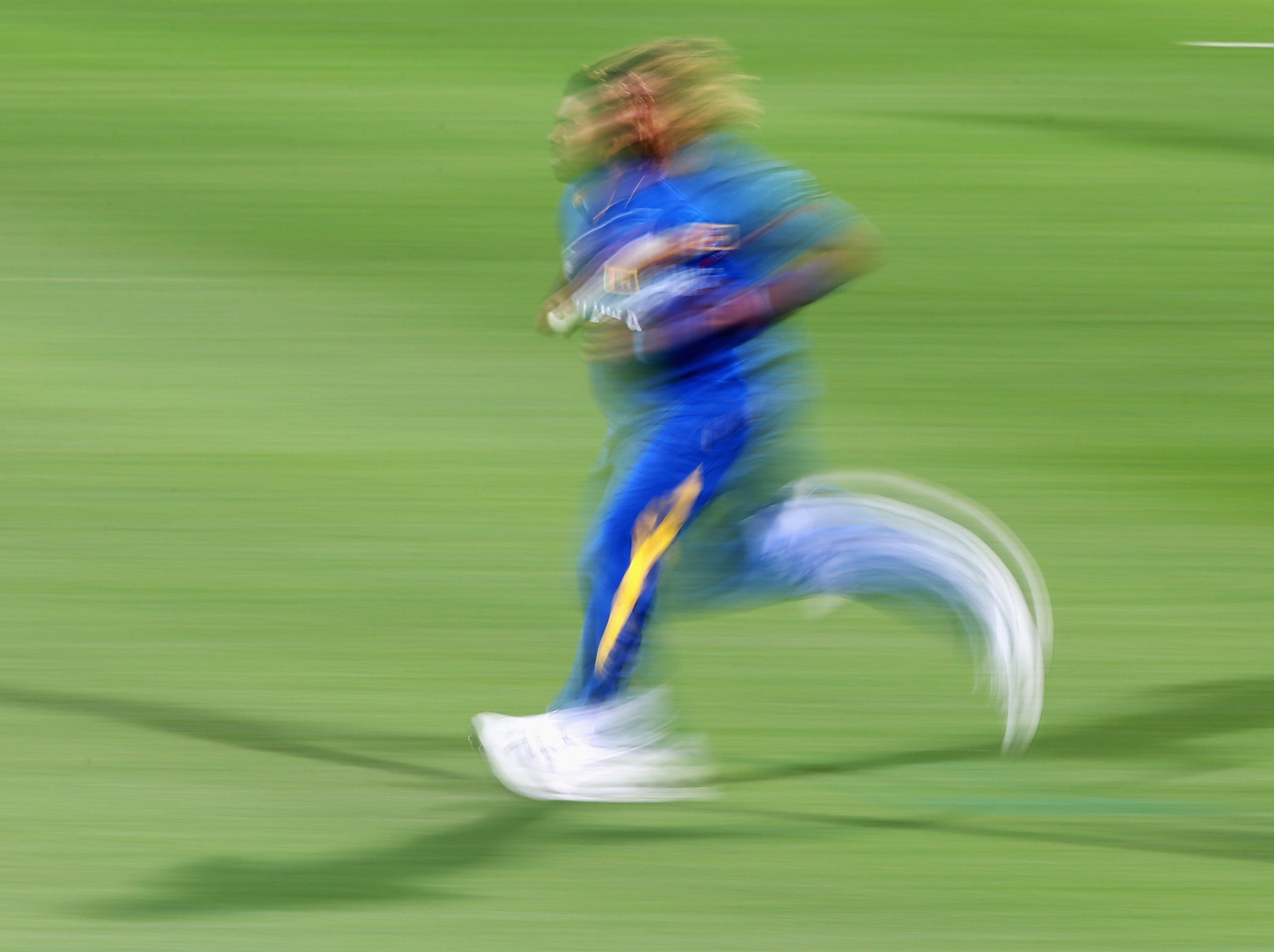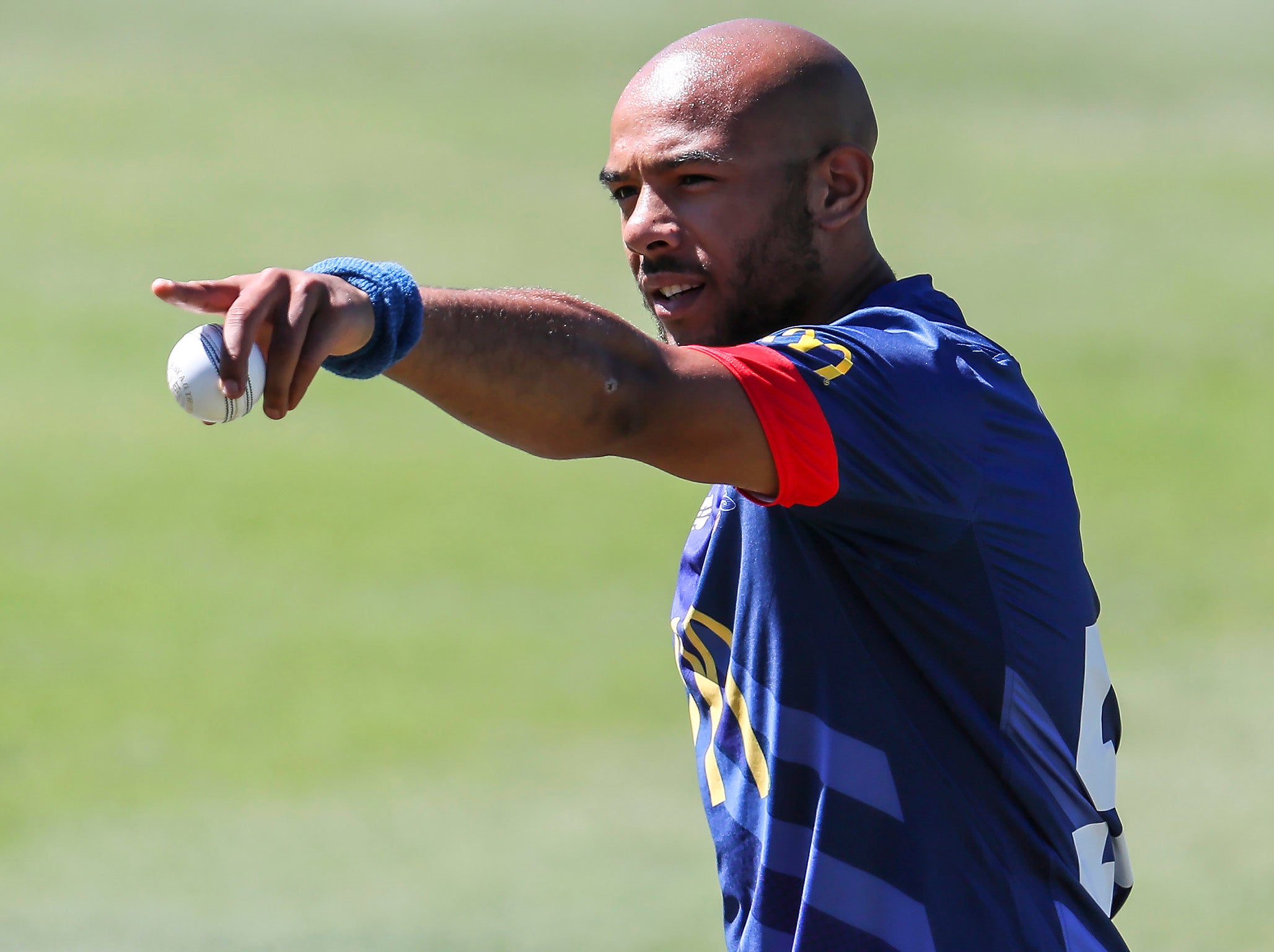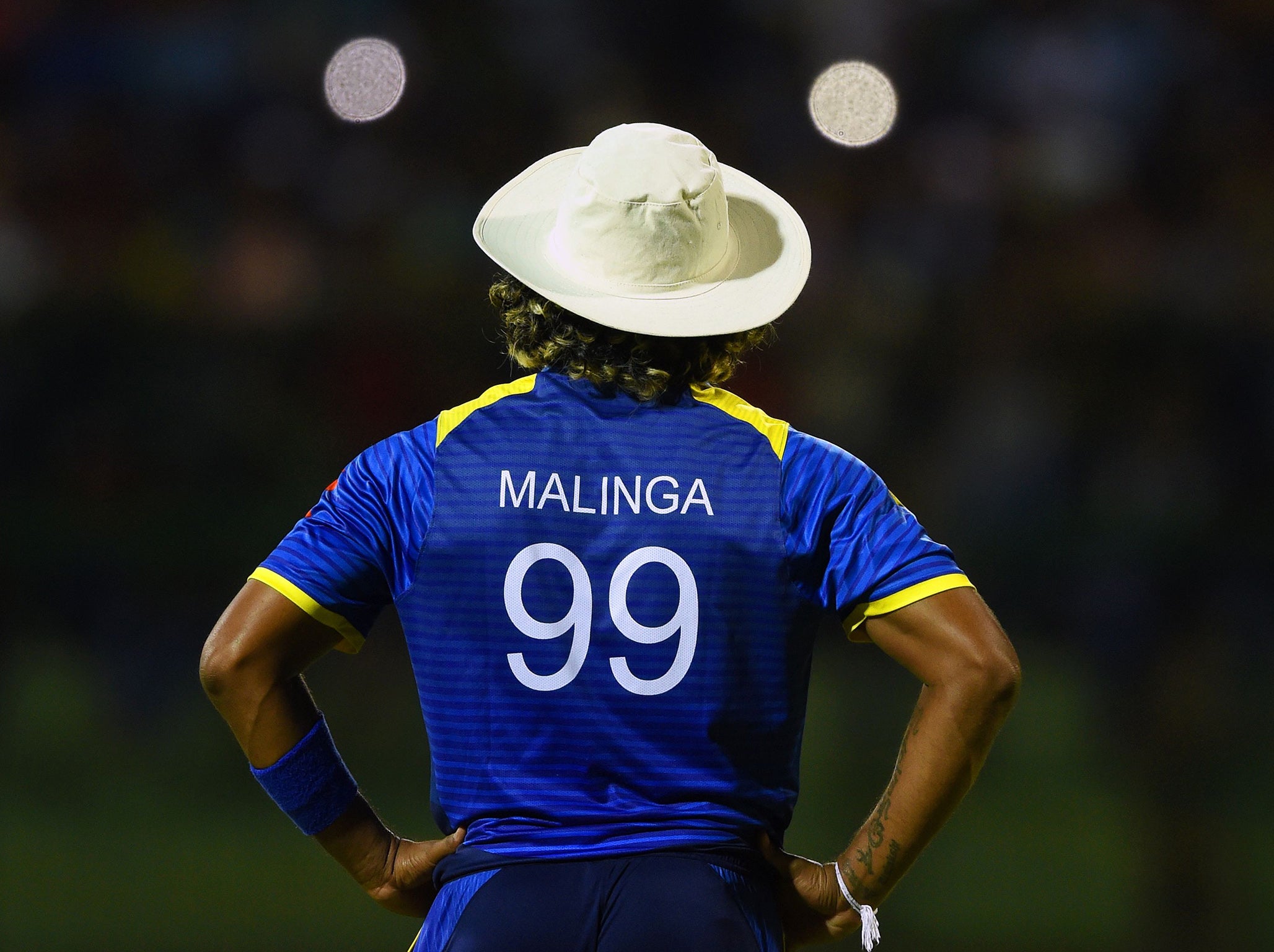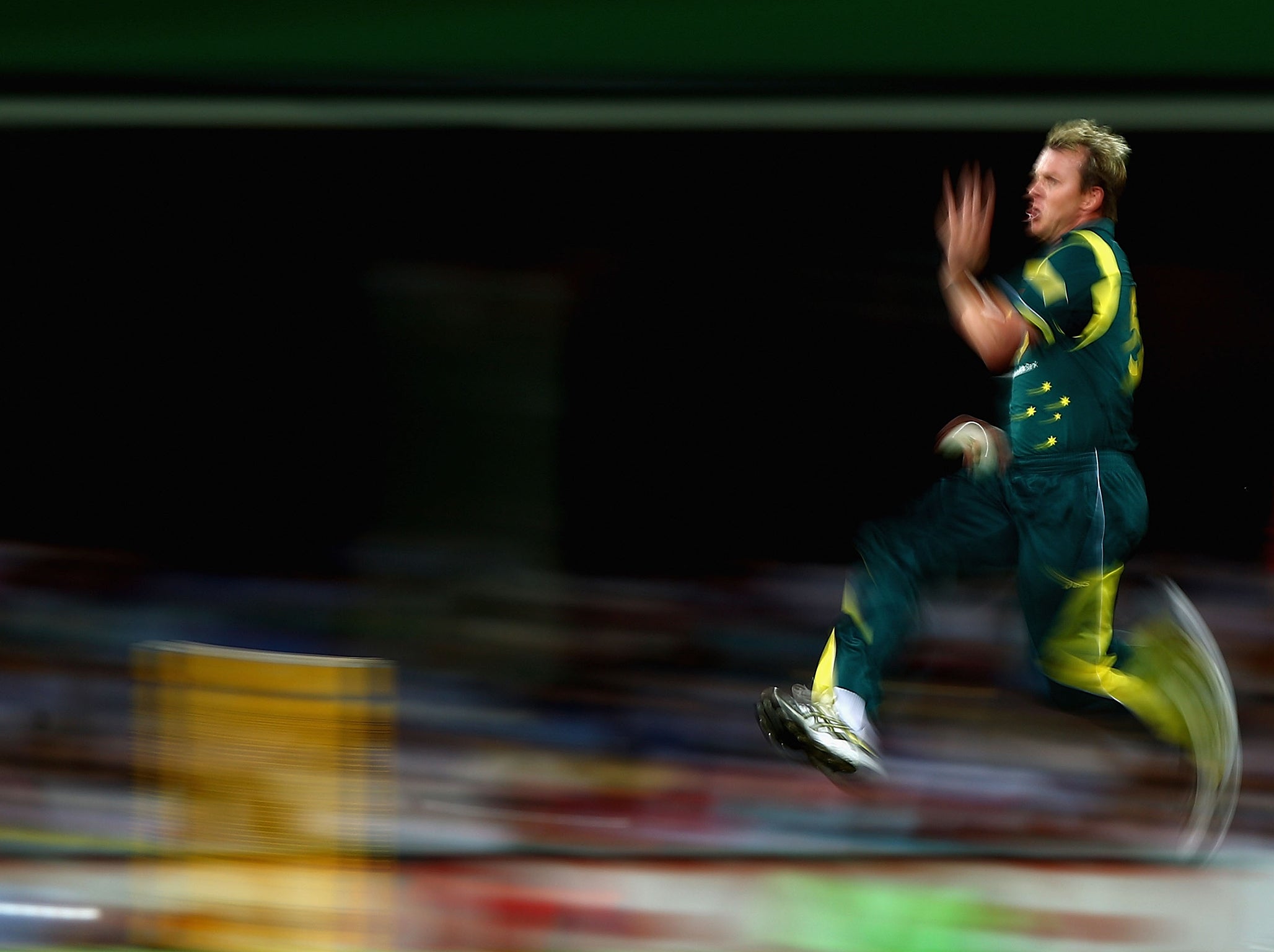How Twenty20 cricket brought the lost art of fast bowling back to the fore
It would be paradoxical if the format most tilted towards batting led to a great evolution in pace bowling. But the notion that T20 could lead faster bowling is very simple

Your support helps us to tell the story
From reproductive rights to climate change to Big Tech, The Independent is on the ground when the story is developing. Whether it's investigating the financials of Elon Musk's pro-Trump PAC or producing our latest documentary, 'The A Word', which shines a light on the American women fighting for reproductive rights, we know how important it is to parse out the facts from the messaging.
At such a critical moment in US history, we need reporters on the ground. Your donation allows us to keep sending journalists to speak to both sides of the story.
The Independent is trusted by Americans across the entire political spectrum. And unlike many other quality news outlets, we choose not to lock Americans out of our reporting and analysis with paywalls. We believe quality journalism should be available to everyone, paid for by those who can afford it.
Your support makes all the difference.Modern professional sport is a world of possibilities being ceaselessly extended. That much is evident in the staggering advances made in fielding and batting in cricket in the past decade. Yet there is one area in which there has been no great leap in recent years: the speed of the fastest bowlers.
Jeff Thomson was recorded bowling 99.7mph in 1975. In the 2003 World Cup Shoaib Akhtar bowled the first recorded 100mph ball. But across the 2015 World Cup, 2016 World Twenty20 and 2017 Champions Trophy the fastest single delivery was only 94.9mph, by Adam Milne in the World Cup.
It would be paradoxical if the format most tilted towards batting led to a great evolution in pace bowling. But the notion that T20 could lead to pace bowlers bowling faster - or, at least, being able to maintain their fastest speeds for longer - is very simple.
“If a young and fit fast bowler were to play all forms of cricket and attempted to bowl 90 mph deliveries with every ball his percentage of top pace deliveries would or should be higher in T20 cricket,” explains Daryl Foster, a former Pakistan bowling coach regarded as an oracle on bowling biomechanics.
Over a Test match, in which bowling 50 overs in a game is not uncommon, fast bowlers need to preserve themselves. Even in a one-day international, ten overs over three or four spells entails an element of self-management. There is no need for this in T20, where bowlers deliver only bowl 24 balls.
In the coming years Tymal Mills’s career will double as an fascinating experiment in whether T20 can help pace bowlers locate greater speeds. Quick bowlers, like Shaun Tait and Lasith Malinga, specialising in T20 is nothing new. Where Mills is different, and intriguing, is that his specialisation came so early - his last first-class or one-day match was two years ago, before he had turned 23.

Mills believes that he will “definitely” be able to reach, and maintain, quicker speeds through specialising in T20. “From a skill point of view it helps because it's all I'm thinking about. In theory if I can just get a nice period of staying fit and health, I’ve got no excuse not to be at full throttle more often than not.”
Yet it is much more complicated than simply being able to bowl quicker because of greater self-preservation. In his two years as a specialist Mills’ great allure has been his speed. But the process of maintaining his greatest pace - over 90mph - is bound up with vagaries of fitness, form and rhythm, and the challenge of self-managing himself when he is not playing in a T20 league.
“Sometimes it's tough to stay in rhythm,” he explains. “When you're playing in four-day cricket you've got time to settle into a spell and bowl fast and really find rhythm. Whereas in T20 you’ll bowl four overs none of which are in a spell so it can be difficult.” At times during the Pakistan Super League, Mills struggled to bowl at quicker than 85mph.

Perhaps training and strength and conditioning have simply not yet adjusted to how to elevate specialist T20 quicks to greater speeds. “We should be seeing more 90mph bowlers in T20,” says the fast bowling coach Steffan Jones. “Physiology would suggest yes but technique is the limiting factor with most bowlers at the minute and fatigue finds the weakest link…Knowledge on training, coaching and preparation is essential.”
If bowlers are to reach their quickest possible speeds in T20, new training methods might be needed. “The ability to generate the power necessary to release the ball at higher speeds in the shortened form of the game seems intuitive,” believes Marc Portus, head of movement science at the Australian Institute of Sport and a bowling biomechanics expert. “But I think this would require a completely different approach to developing fast bowlers, that, as far as I can see, isn’t in place now.”

Ultimately Mills might represent a harbinger of a future in which there are two distinct types of fast bowler: those built for all-formats; and those explicitly designed for T20. Portus envisages athletic rhythmic bowlers, like Brett Lee, with the capacity to play in all formats, alongside power bowlers - like a muscled-up Shaun Tait - who are restricted to T20 as their styles cannot tolerate bowling more overs without breaking down.
Such bowlers would have distinct training regimes, with high strength and power development emphasised to develop short bursts of power to attain extreme high ball speeds over 24 balls.
For such bowlers to become common, it might require a paradigm shift in how quick bowling talent is developed. “It would be an innovative - and gutsy - high performance program that would identify young fast bowlers for the short form only and train them differently in the gym and in their skill set for T20 only,” Portus says.

Yet should rewards in T20 continue to increase, so will the premium on finding the best talent. Coaches specialising in identifying and nurturing bowlers to bowl express pace tailor-made for T20 might not be far away. While faster isn’t always better in T20, being able to attain greater pace makes bowlers’ slower balls more effective: Mills considers his array of slower balls more potent than his quickest delivery, precisely because batsmen have to set themselves for a 90mph ball.
The pursuit of pace explicitly designed for T20 embodies how the format is forcing the sport to ask new questions. If financial incentives for players remain as they are now, then the world’s fastest bowlers might increasingly specialise in T20, innovating in their training methods in the quest for greater speeds. T20 might even become the format with the most high-octane pace bowling.
As scores becoming ever-higher in T20, the prospect of quicker bowlers at least provides one template for embattled bowlers to fight back.
Join our commenting forum
Join thought-provoking conversations, follow other Independent readers and see their replies
Comments